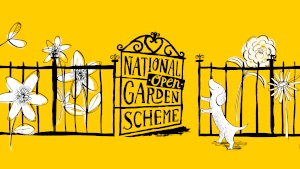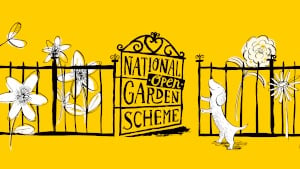About Trenarth
For at least 800 years there have been people living, working and farming here at Trenarth. It is easy to see why the site was chosen, near to a river for communication both locally and with the wider world, good gently sloping south facing land, woodland for fuel and grazing, streams bounding the fields, and stone readily available for building the house and walls.
The house is a liquorice-all-sorts building, dating from each of the past six centuries from sixteenth century cellars upwards and onwards, reflecting the changing fortunes and ownership of the farm. The original family of Trenarth passed it to the Trefusis family by marriage in 1658, then to the Nicholas family in the early eighteenth century: they held it until 1842; subsequently seven other families lived here until we bought it in 1992. You will find several date stones set in the buildings to give context.
As with most farms, there would have been little time for ornamental garden making. Horticulture is represented by practical concerns: the listed eighteenth century garden walls enclosing an area used to grow vegetables and fruit for the family, and three orchards are marked on a nineteenth century estate map. The only other early indications of garden or landscape making is the one noble Monterey pine, remains of a former avenue near entrance, planted in the nineteenth century.
By 1992 the gardens had benefitted from several decades of gardening by the previous owners. In the 1950’s the owners had a horticulture business, raising thousands of anemones and daffodils for the cut flower trade: the remains of their green houses are still seen in the now restored potting shed in the walled garden. The subsequent owners planted in the 1960’s a large orchard and yew hedging ‘rooms’ in the walled garden, built terrace walls, and planted shelter belts and shooting copses around the farm. Very few of the old ornamental shrubs remain but the main legacy is the important bone structure of hedges, shelter, belts and walls, but essentially the gardens have been planted over the past 30 years – and extended inevitably and continually! – and now cover 3 or 4 acres.
Garden making has been organic, and there is – evidently – no overall plan. Very varied gardens have been created, from the little sixteenth century sheltered courtyard, to the formal walled gardens, from the vegetable patch to the orchard, and attempts made to harness the shelter and mild climate to push the boundaries of hardiness. This together with a deliberate attempt to ensure variety, colour and interest throughout the year have been drivers. Encouraging conservation of wildlife, bats, birds and bees, is also a high priority.
Several new areas have been incorporated in the past ten years: a gravel garden with granite and palms, a riot of colour in July and August with dieramas and agapanthus. ‘Pagets puddle’, now a bog garden, the old animal pond down an ancient green lane beside woodland planted with tree ferns, the beech walk and a little parkland area, the ‘wolery’, children’s area, interesting seats everywhere, and a hint of quirkiness, all is not what it seems at first sight!
Website:
https://trenarthgardens.com/garden



.jpg)

.jpg)
.jpg)
.jpg)
.jpg)
.jpg)